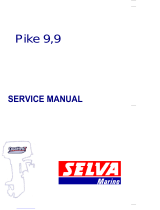
GEN
INFO
63P3F11
General information
How to use this manual.................................................................................1-1
Manual format............................................................................................1-1
Symbols.....................................................................................................1-2
Safety while working......................................................................................1-3
Fire prevention...........................................................................................1-3
Ventilation..................................................................................................1-3
Self-protection ...........................................................................................1-3
Parts, lubricants, and sealants ..................................................................1-3
Good working practices .............................................................................1-4
Disassembly and assembly .......................................................................1-4
Identification...................................................................................................1-5
Applicable models .....................................................................................1-5
Serial number ............................................................................................1-5
Features and benefits....................................................................................1-6
Crankshaft and cylinder.............................................................................1-6
Balancer ....................................................................................................1-7
Piston and piston ring ................................................................................1-7
Connecting rod ..........................................................................................1-8
Cylinder head cover...................................................................................1-8
Intake system ............................................................................................1-9
Top cowling .............................................................................................1-10
64E type power trim and tilt unit ..............................................................1-11
Cooling system ........................................................................................1-12
Lubrication system...................................................................................1-13
Fuel system .............................................................................................1-15
Rectifier Regulator...................................................................................1-16
Isolator.....................................................................................................1-16
Technical tips ...............................................................................................1-17
Electronic control system.........................................................................1-17
ECM.........................................................................................................1-17
Fail-safe control .......................................................................................1-18
Warning control .......................................................................................1-19
Shift cut control........................................................................................1-20
Over-revolution control ............................................................................1-20
Fuel pump control....................................................................................1-20
Propeller selection.......................................................................................1-21
Propeller size...........................................................................................1-21
Selection..................................................................................................1-21






















